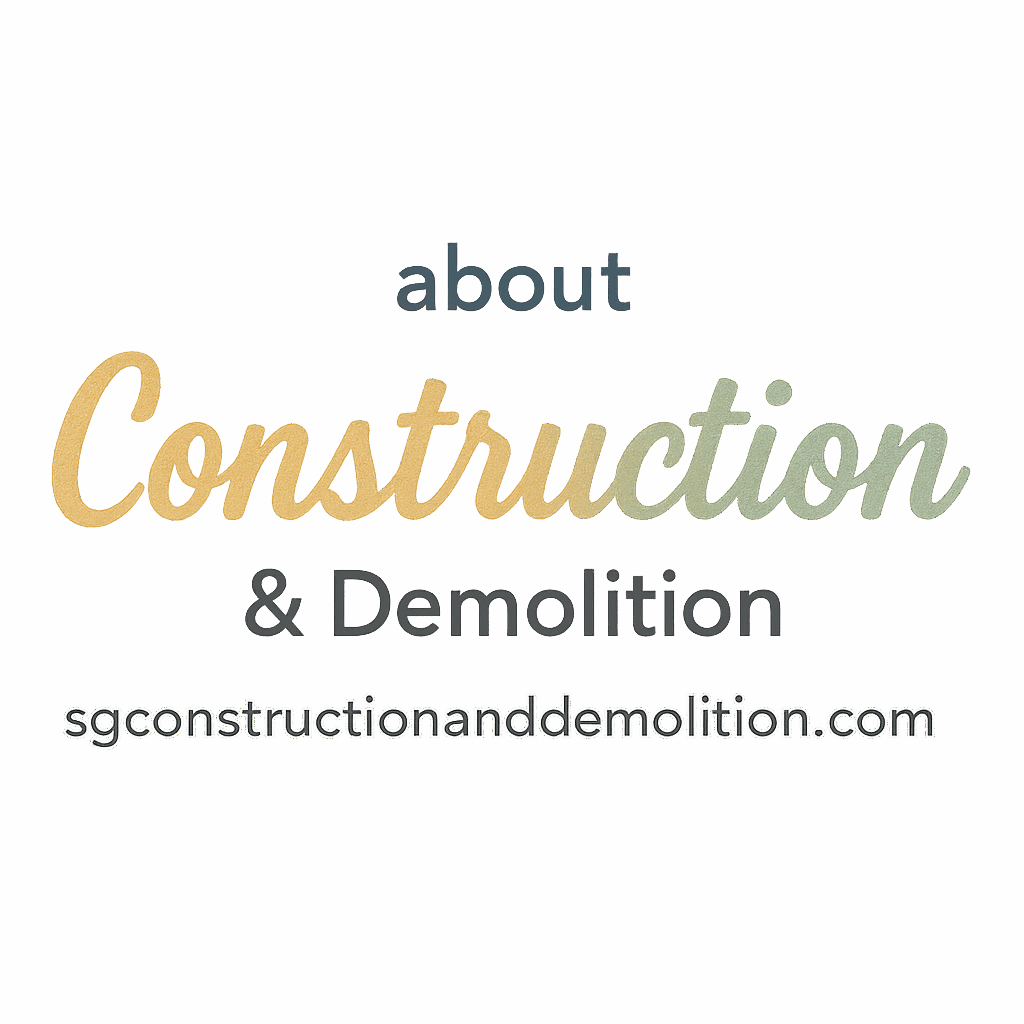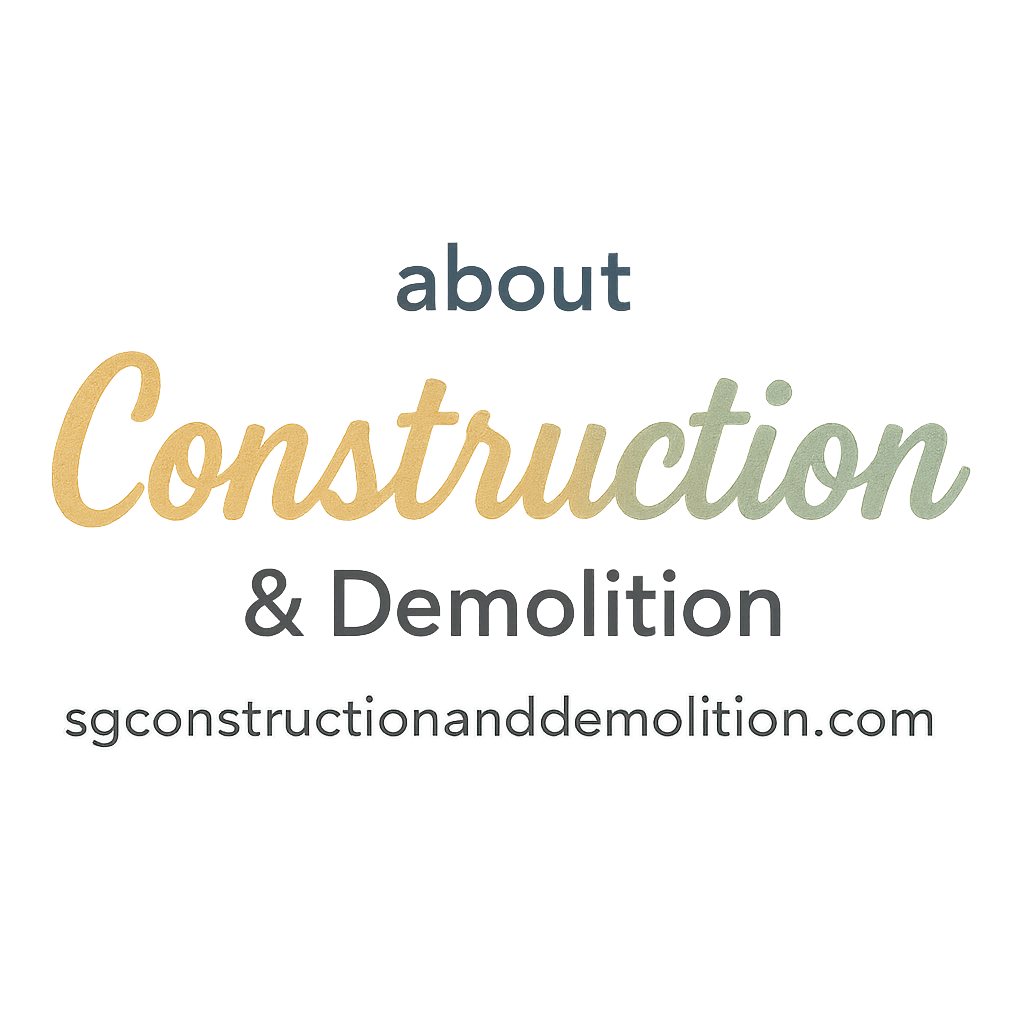Introduction
Demolition is thrilling. There’s something oddly satisfying about tearing down the old to make space for the new. But let’s be honest—it’s also dangerous, especially in active or sensitive construction zones.
If you’re involved in demolition in construction areas, safety isn’t just a priority—it’s your lifeline. Whether you’re knocking down a wall or gutting an entire structure, each action comes with risks. This guide will walk you through 8 essential safety tips that could very well save lives on-site.
Why Safety in Demolition Matters
The Real Dangers of Demolition in Construction Areas
Imagine this: you’re halfway through tearing down a building when you hit an unexpected gas line. Or worse—there’s asbestos in the insulation. These aren’t freak accidents; they’re common in poorly planned demolition jobs. That’s why safety protocols exist—to prevent injury, fines, and even fatalities.
Legal & Regulatory Requirements
Beyond human safety, there’s the legal side. Regulatory bodies like OSHA have clear rules about demolition in construction areas, and breaking them can cost you more than just money—it can shut your whole project down.
1. Conduct a Thorough Site Assessment
Before you swing a hammer, do your homework.
Identify Hazard Zones
Walk the site. Look for weak floors, unstable walls, and spots with electrical or plumbing hazards. Use caution tape or barriers to mark risky areas.
Check for Hazardous Materials
Ever heard of “hidden killers”? Asbestos, lead paint, or mold could be lurking. Always inspect for these dangers and follow environmental removal protocols before starting.
💡 Need a primer? Start with our construction basics guide.
2. Use the Right Demolition Techniques
How you tear down is just as important as what you tear down.
Choose Between Manual or Mechanical Methods
- Manual: Ideal for tight spaces or when precision is needed.
- Mechanical: Faster, but riskier without proper control.
Use the right technique based on the structure’s complexity and surroundings.
👉 Check out our in-depth guide on demolition techniques.
3. Implement a Clear Safety Plan
Communication and Chain of Command
A solid safety plan outlines:
- Who’s in charge
- Evacuation routes
- Emergency contact protocols
Without it, confusion reigns—and mistakes happen.
📘 Plan better with our expert article on planning safety.

4. Ensure Personal Protective Equipment (PPE)
Would you ride a motorcycle without a helmet? Same logic here.
Head-to-Toe Safety Gear
At a minimum, your crew needs:
- Hard hats
- Safety goggles
- Gloves
- Steel-toed boots
- Respirators (when dust or fumes are present)
Educating Teams on PPE Usage
Gear is useless if no one wears it correctly. Run drills. Post infographics. Make it second nature.
5. Use Proper Tools and Equipment
Broken tools are just accidents waiting to happen.
Maintain Equipment Regularly
Check machines for:
- Hydraulic leaks
- Worn brakes
- Faulty electrical systems
And always follow manufacturer instructions.
🔧 Explore our essential tools and equipment list.
6. Handle Utilities With Caution
Utilities are the silent threat during demolition.
Shut Off Power, Water, and Gas Before Work
Never assume the utilities are already off. Always double-check and label shut-off points.
Tag for Power Safety
Need help managing electrical hazards? Browse our electric safety tag articles.
7. Control Dust and Debris
Dust isn’t just annoying—it’s hazardous.
Use Water Spray or Ventilation
Spraying water before and during demolition helps keep particles from becoming airborne.
Prioritize Air Quality for Workers
Use industrial vacuums or HEPA filters to reduce long-term respiratory risks.
8. Train Workers Continuously
A one-time safety talk isn’t enough.
Ongoing Safety Workshops
Bring in experts. Host weekly toolbox talks. Encourage feedback from your crew on potential risks.
📚 New to the industry? Visit our beginners section for quick tips and training ideas.
Bonus: Go Green and Smart
You don’t have to wreck the planet while wrecking a building.
Reduce Waste with Green & Smart Trends
Embrace eco-friendly methods like:
- Recycling materials
- Using energy-efficient tools
- Digitizing safety checklists
🌱 See what’s new in green & smart trends.
Conclusion
Let’s face it—demolition in construction areas is risky business. But when you plan well, equip your crew properly, and stay alert, you can drastically reduce those risks. These 8 tips aren’t just “nice to follow”—they’re must-haves.
From site assessments to PPE, utility checks, and ongoing training, every single step contributes to a safer, more productive demolition process. Don’t cut corners. Build (or demolish) smart.
🧱 Dive deeper into these topics via our related construction, techniques, and planning tags.
FAQs
1. What’s the most common safety mistake during demolition?
Not conducting a full site inspection beforehand. You can’t protect what you don’t see.
2. Is PPE really that important if I’m just doing light demo?
Absolutely. Even a falling screw can be dangerous without eye protection.
3. How can I manage noise levels during demolition?
Use equipment with noise-dampening tech and provide ear protection to your crew.
4. What’s the difference between deconstruction and demolition?
Deconstruction involves dismantling to reuse materials, while demolition is typically faster and more destructive.
5. Do I need a permit for every demolition job?
In most places, yes. Always check local regulations before starting.
6. Can smart technology improve demolition safety?
Yes! Drones, wearable tech, and smart sensors are game changers. Learn more on smart tech.
7. Where can I find trusted demolition equipment?
Start with our curated list at tools and equipment or explore the equipment tag.


